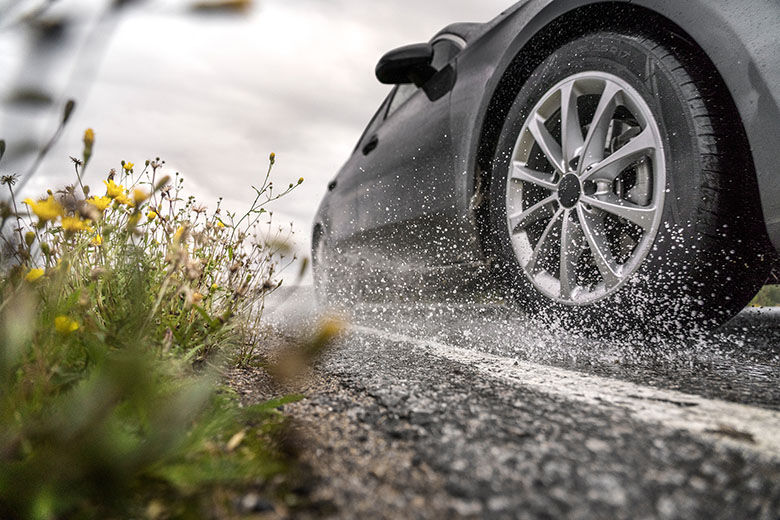Product news
Fall rain increases the risk of aquaplaning – tread depth and driving style are more important than the tire's wet grip rating
Fall rain puts additional requirements on tires. According to an expert from Nokian Tyres, a high wet grip rating alone is not enough to avoid the risk of aquaplaning.

As summer turns to fall, evenings grow darker and rainfall increases. The rutted northern roads may be hazardous both during and after heavy rainfall: the risk of aquaplaning increases when the water collected on the road surface does not have time to dry off.
A water cushion is formed below the tire when the tread pattern cannot remove all the water between the tire and the road. This causes the tires to lose grip and the steering feel to disappear, and the driver can no longer control the vehicle. Aquaplaning may catch even the most experienced drivers by surprise, since it is impossible to practice in advance.
Check the condition of your tires and your inflation pressures
A high-quality summer tire with sufficient tread remaining is the safest choice for wet fall roads.
– The condition of your tires is an important factor in aquaplaning prevention; if the tire is worn, its grooves will not store as much water, says Matti Morri, Technical Customer Service Manager for Nokian Tyres.
In a comparison test published in issue 5/2019 of Tekniikan Maailma, a worn summer tire with a tread depth of 3–4 mm has clearly poorer handling than a new summer tire with 7 mm of tread. In the test, the new tire started aquaplaning at a speed of 83.1 km/h when the water cushion on the road was 10 mm thick, while the worn tire went into aquaplaning at a speed of 61.2 km/h. In order to avoid the risk of aquaplaning, you should replace your tires when their tread depth falls below 4 mm. Nokian Tyres' DSI (Driving Safety Indicator) makes it easier to monitor the tread depth of your tires; it clearly indicates the amount of tread remaining on the tire.

A new summer tire will also reduce braking distances on wet surfaces, although Morri says that wet grip or wet braking should not be confused with a tire's tendency for aquaplaning.
– The wet grip category stated in the EU tire labels indicates the efficiency of the tire's wet grip; in other words, how the tire behaves when braking on wet asphalt. However, the tendency for aquaplaning cannot be derived from the tire labels, he reminds us.
In addition to the condition of the tires, tire pressure is also a significant factor. If the pressure on the tires is too low, they may not retain their shape in the water. This will make the car more susceptible to aquaplaning.
Avoid overtaking and puddles
In addition to high-quality summer tires, what happens between the seat and the steering wheel is also important. You should reduce your speed slightly when driving in the rain.
– A further reduction is required when you need to drive through a puddle on the road. Whenever possible, you should also try to avoid the ruts, as they tend to collect water, Morri says.
Overtaking is also not advised. The car may easily start aquaplaning when you need to drive over ruts when changing lanes.
If, despite taking these precautions, your car starts aquaplaning, act as follows:
- Keep calm.
- Let off the accelerator and push the clutch down in order to slow the car down and restore grip. Braking will not help, as it will only further reduce grip.
- Keep your steering straight to avoid veering into a ditch or the oncoming lane when grip is restored.
How to avoid aquaplaning
Further information on tire condition
Further information on the Driving Safety Indicator
Further information:
Nokian Tyres plc
Technical Customer Service Manager Matti Morri, tel. +358 10 401 7621
[email protected]